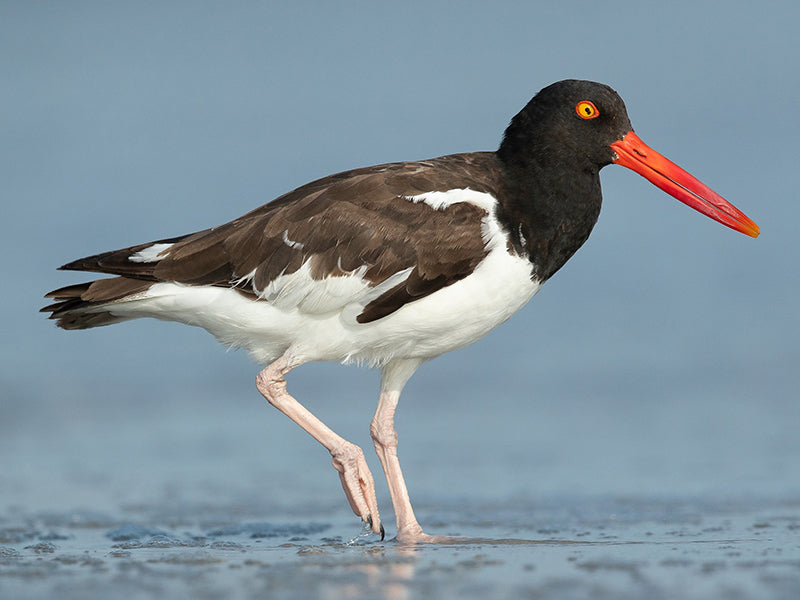Oystercatchers
| Order: CHARADRIIFORMES - Family: HAEMATOPODIDAE |
| 9 Species currently existing - 1 in region |
Appearance: Oystercatchers are medium to large-sized birds with long, stout orange, red, or yellow bills that are used to pry open shells of bivalve mollusks, their primary food source. They have strong legs and webbed feet, which are adapted for foraging along rocky shorelines and mudflats. Oystercatchers typically have black and white plumage with bold markings, and some species have colored eye rings.
Habitat: Oystercatchers are found in coastal habitats worldwide, including rocky shores, sandy beaches, estuaries, and mudflats. They are often seen foraging in intertidal zones, where they probe the sand or mud for bivalve mollusks such as mussels, clams, and oysters. Oystercatchers are also known to feed on crabs, worms, and other invertebrates.
Behavior: Oystercatchers are active, social birds that are typically seen in pairs or small groups. They have loud, distinctive calls that they use for communication and territorial defense. Oystercatchers are known for their characteristic probing behavior, where they use their bills to probe into the sand or mud to find buried prey. They are also agile flyers and can be seen flying low over the water or coastlines.
Reproduction: Oystercatchers typically nest in shallow scrapes on the ground, often in open areas such as beaches or dunes. Both male and female oystercatchers share incubation duties and care for the young chicks once they hatch. Oystercatchers are known for their defensive behaviors when protecting their nests or chicks from predators or intruders.

American Oystercatcher
Haemotopus palliatus
Spanish Name: Ostero-pío Americano
Size: 17 in | 43 cm
Habitat: tidal areas with rock
Height: <100 m
Photo: © Dorian Anderson eBird S59184049 Macaulay Library ML 173634271

